The primary difference between an extruder and an injection molding machine is their function: an extruder continuously pushes material through a die to create long, uniform shapes, while an injection molding machine produces discrete, often complex parts by injecting molten material into a mold.
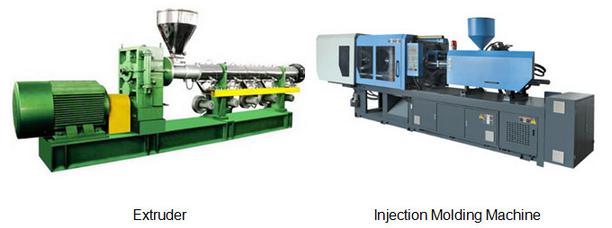
Basic Principles
Working Principle of an Extruder
The core function of an extruder is to transform raw plastic pellets or granules into a continuous profile. This transformation occurs in several key steps:
- Melting Zone: As the pellets move through the barrel, they encounter resistance and heat. Electrical heaters and mechanical friction work in tandem to melt the pellets into a viscous liquid.
- Mixing and Compressing: The molten plastic is mixed and compressed by a rotating screw inside the barrel. This ensures that the plastic is homogenous and free from air bubbles.
- Die Formation: The molten plastic exits the barrel through a die, which gives the plastic its final shape. The plastic can take the form of sheets, rods, or any other continuous profile.
- Cooling and Cutting: Finally, the extruded plastic passes through cooling tanks or fans.
Working Principle of an Injection Molding Machine
Injection molding involves the production of parts by injecting molten material into a mold. The operation unfolds in the following way:
- Material Feeding: Similar to an extruder, an injection molding machine also has a hopper where raw plastic pellets are loaded.
- Cooling: Once inside the mold, the plastic starts cooling and solidifying, taking the shape of the mold cavity.
- Ejection: After the plastic solidifies, the mold opens, and the finished part is ejected. It may require additional steps like trimming or painting to complete the process.
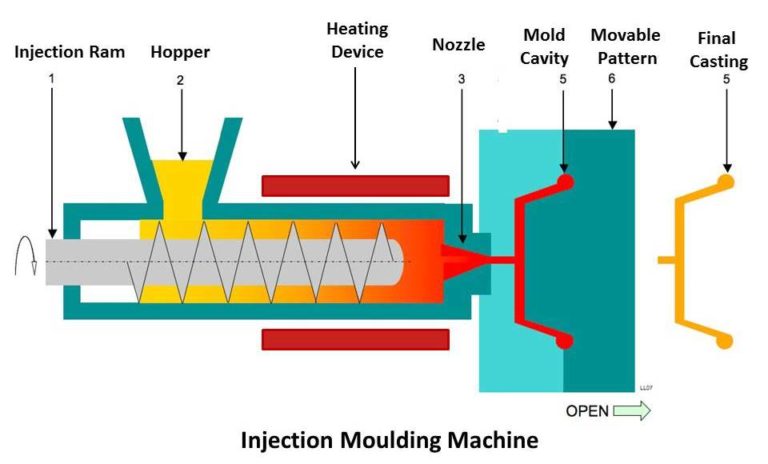
Components and Structure
Components of an Extruder
Understanding the components of an extruder is crucial for grasping its functionality and maintenance needs. Here are the main parts:
- Hopper: This is the container where raw plastic pellets are loaded. The hopper usually has a feeding mechanism to control the flow of the pellets.
- Barrel: This is the chamber through which the plastic pellets pass.
- Screw: A critical part, usually made of specialized metal alloys, that pushes and mixes the plastic. The screw design can vary based on the type of material and the desired end-product.
- Die: The die is the shaping tool at the end of the barrel that determines the profile of the extruded material.
- Cooling System: Consisting of fans or water baths, this system cools the extruded plastic to solidify it into its final shape.
- Cutter or Winder: Depending on the application, the extruded material is either cut into specific lengths or wound onto rolls.
Components of an Injection Molding Machine
The injection molding machine is more complex in terms of structure and comprises several main components:
- Hopper: Like in an extruder, the hopper holds the raw plastic pellets.
- Barrel: A heated cylinder where the plastic melts.
- Heating Elements: These electrical components are crucial for melting the plastic. Their design and arrangement can influence the quality of the final product.
- Mold: The core component that gives the plastic its final shape.
- Clamping Unit: This holds the mold together during the injection and cooling processes. Its strength is critical to maintain the integrity of the mold shape.
- Ejection System: Once the plastic solidifies in the mold, this system pushes out the finished product. It can be as simple as rods pushing the part out, or more complex mechanisms for intricate parts.
- Control Panel: This is the operational hub, where settings like temperature, pressure, and cycle time are managed.
Types
Types of Extruders
Understanding the different types of extruders is vital for selecting the right machine for specific applications. The main types are as follows:
- Single Screw Extruders: Primarily used for processing a wide range of polymers. They are versatile but may not be ideal for all types of materials.
- Twin Screw Extruders: There are both co-rotating and counter-rotating variants.
- Ram Extruders: Mostly used for processing materials that are not easily melted, such as certain types of rubber. A hydraulic ram pushes the material through the die.
- Gear Pump Extruders: These use a gear pump to push the melted material through the die, offering precise control over output.
- Piston Extruders: Similar to ram extruders, but use a piston mechanism instead of a hydraulic ram.
Each type of extruder has its own set of advantages, limitations, and suitable applications.
Types of Injection Molding Machines
Injection molding machines also come in various types, tailored to different tasks and materials:
- Hydraulic Injection Molding Machines: These use hydraulic cylinders to generate the force required to inject the material into the mold.
- Electric Injection Molding Machines: These are more modern and use electric servomotors to accomplish the same tasks as their hydraulic counterparts.
- Hybrid Injection Molding Machines: Combining the best of both hydraulic and electric types, these machines offer both power and precision.
- Micro Injection Molding Machines: These are optimized for producing very small components and are used in applications like medical devices.
- Rotary Injection Molding Machines: These have a rotating mold table that allows for the simultaneous operation of two molds, reducing cycle times.
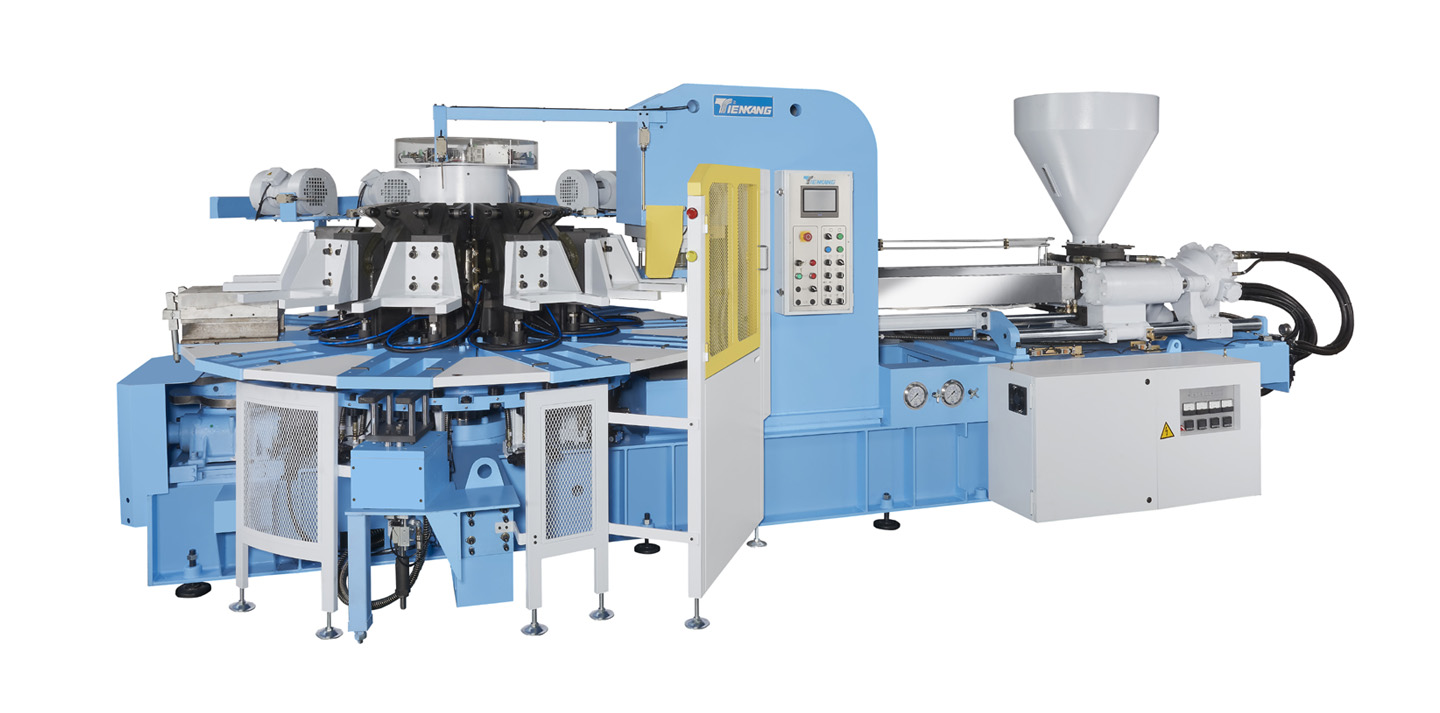
Applications
Typical Applications for Extruders
Extruders are versatile machines that have a range of applications across multiple industries. Here are some typical uses:
- Plastic Tubing and Pipes: In construction and medical fields, extruders produce PVC pipes, polyethylene tubes, and other specialized tubing.
- Film and Sheet Extrusion: Used extensively in packaging, extruders can produce plastic films and sheets.
- Compounding: Mixing different types of polymers or adding fillers, colors, or other additives are also typical applications.
- Food Industry: Believe it or not, extruders are also used for making certain types of snacks and pet foods.
- Textiles: Filament yarn and other fiber products often use extrusion as part of their manufacturing process.
- Recycling: Material recycling facilities often use extruders to reformulate and shape recycled plastics.
Typical Applications for Injection Molding Machines
- Automotive Components: Various car parts like dashboards, bumpers, and even smaller components like gears can be produced using injection molding machines.
- Consumer Electronics: Cases for smartphones, laptops, and other electronics are usually made through injection molding.
- Medical Devices: Syringes, surgical instruments, and many other medical components are produced using specialized injection molding machines.
- Packaging: Caps, containers, and other packaging items can be efficiently mass-produced.
Material Compatibility
Materials Suitable for Extrusion
- Polyethylene (PE): Used commonly for making plastic bags, bottles, and toys.
- Polypropylene (PP): Used in automotive parts, consumer goods, and packaging.
- Polyvinyl Chloride (PVC): Commonly used for pipes, wire insulation, and medical devices.
- Polystyrene (PS): Often used in foam products and disposable cutlery.
- Polyethylene Terephthalate (PET): Primarily used for bottles and food containers.
- Thermoplastic Elastomers (TPE): Used in flexible products like weather stripping and gaskets.
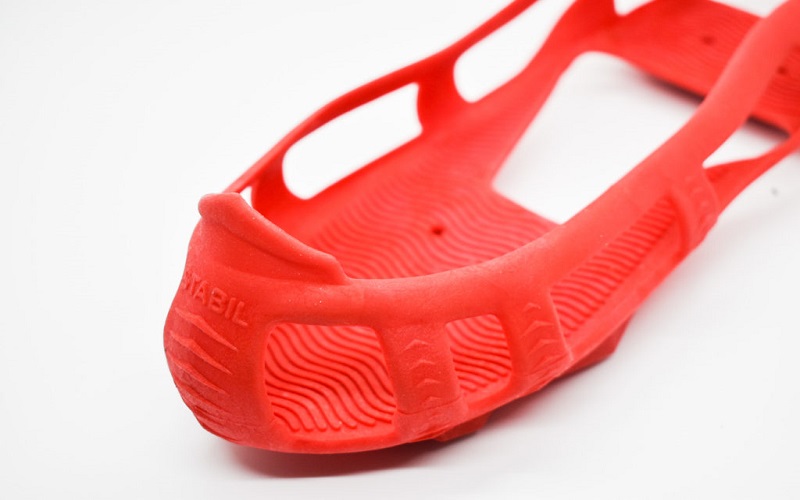
Materials Suitable for Injection Molding
- Acrylonitrile Butadiene Styrene (ABS): Used in toys and consumer electronics.
- Polycarbonate (PC): Used for making eyewear, windows, and medical devices.
- Polyamide (PA): Used in clothing, ropes, and thermal breaks.
- High-Density Polyethylene (HDPE): Common in containers and plumbing systems.
- Silicone Rubber: Used for medical equipment, cookware, and electrical insulation.
- Polyether Ether Ketone (PEEK): Common in aerospace and medical applications for its high thermal stability.
Operational Parameters
Extruders
- Temperature: Each material has an optimal temperature range for extrusion.
- Screw Speed: Affects the throughput and quality of the extruded material.
- Die Design: Impacts the final shape and finish of the product.
- Cooling Rate: Faster cooling rates often result in better mechanical properties but may introduce defects.
Operational Parameters for Injection Molding Machines
Injection Speed: Determines how fast the molten plastic is injected into the mold.
- Injection Pressure: Influences the filling of the mold and the quality of the final product.
- Mold Temperature: Affects the cooling rate and, consequently, the mechanical properties of the final product.
- Clamping Force: Ensures the mold stays closed during the injection and cooling processes.
- Cycle Time: Includes injection, cooling, and ejection times, affecting the overall production speed.
Advantages and Disadvantages
Advantages of Using an Extruder
Extruders offer several benefits in various applications:
- Versatility: Capable of processing a variety of materials and producing various shapes and sizes.
- Low Operational Costs: Generally, lower in cost compared to other forming methods, particularly for high-volume runs.
- Easy Setup: Simpler machinery often translates into quicker setup and less rigorous maintenance schedules.
- Energy Efficiency: Single-screw extruders, in particular, consume relatively less energy.
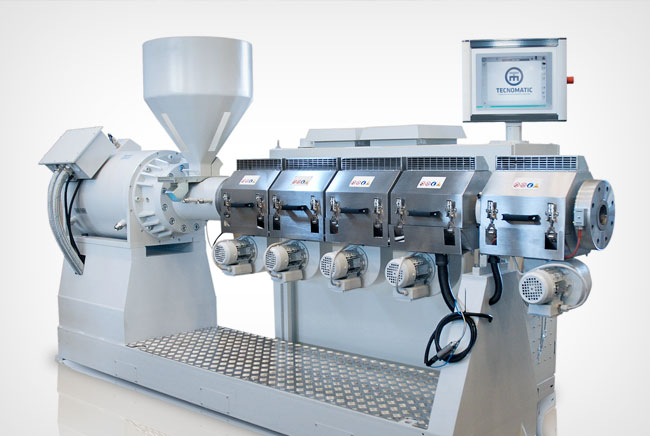
Advantages of Using an Injection Molding Machine
Injection molding machines also offer several key advantages:
- High Precision: Capable of producing complex shapes with high levels of accuracy and repeatability.
- High Production Speeds: Especially useful for large-volume runs, where they can produce parts very rapidly.
- Low Labor Costs: Automated processes mean fewer labor costs, particularly for large-scale production.
- Customization: Offers flexibility in material choice and color, texture, and finishing options.
Disadvantages and Limitations of Extruders
However, extruders do have some drawbacks:
- Limited Complexity: Not suitable for manufacturing highly intricate parts.
- Material Restrictions: While versatile, not all materials can be extruded efficiently.
- Dimensional Inaccuracies: Due to the nature of the process, maintaining extremely tight tolerances can be challenging.
- Initial Costs: The cost of dies and specialized equipment can be relatively high, particularly for custom applications.
Disadvantages and Limitations of Injection Molding Machines
Injection molding machines are also not without their challenges:
- High Initial Costs: The molds are expensive to design and create, making it less cost-effective for small runs.
- Limited to Specific Materials: Not all materials can be injection-molded effectively.
- Setup Time: Changing molds and setup can be time-consuming, which may be a drawback in flexible manufacturing setups.
- Maintenance: Requires regular maintenance and potential downtime, which can be costly in high-volume production environments.

Economic Considerations
Cost Factors for Extruders
When considering the economics of using an extruder, several cost factors come into play:
- Initial Investment: The upfront cost of the extruder, which can vary significantly based on its size, capabilities, and customizations.
- Material Costs: Depending on the materials used, this can be a significant ongoing cost. Bulk purchasing can offer economies of scale.
- Operational Expenses: Energy consumption, labor, and maintenance all contribute to the running costs.
- Tooling Costs: Dies and other specialized tooling may need to be produced, adding to initial and ongoing expenses.
- Quality Control: Equipment and labor costs associated with ensuring the final product meets quality standards.
- Waste Management: Costs associated with the disposal or recycling of waste material generated during the extrusion process.
Knowing these cost factors for extrusion can help in comprehensive economic planning.
Cost Factors for Injection Molding Machines
Injection molding has its own set of economic considerations:
- Mold Costs: Creating the mold is often the most significant initial investment. The complexity and size of the mold will greatly influence its cost.
- Material Costs: High-quality materials can be expensive, especially for specialized applications like aerospace or medical devices.
- Operational Costs: Energy, labor, and machine maintenance contribute to ongoing costs.
- Cycle Time: The time it takes to produce each part can affect labor and energy costs, making it crucial to optimize the production cycle.
- Setup and Changeover: Time and labor costs associated with setting up new molds or changing over to different production runs can be significant, particularly for low-volume production.




